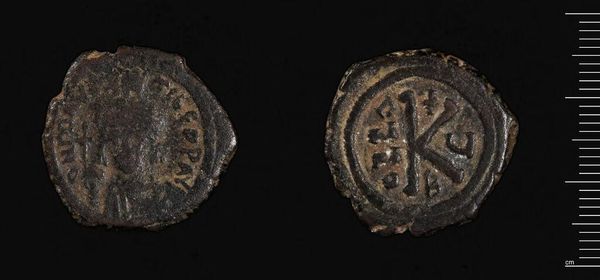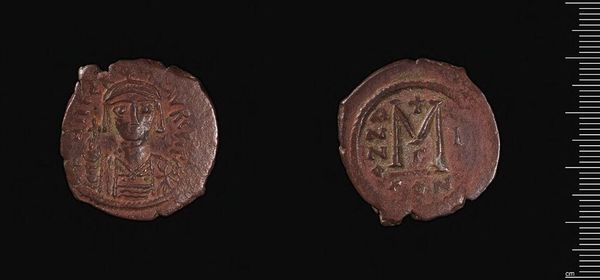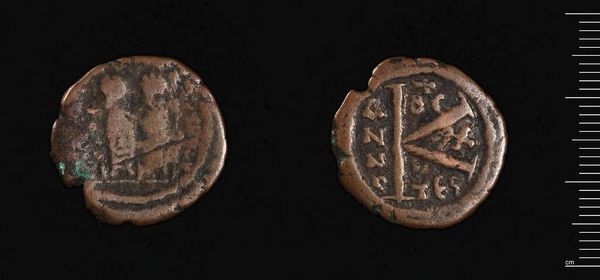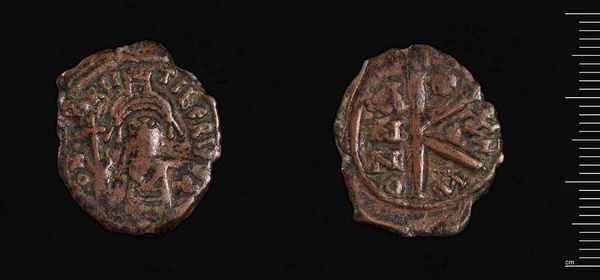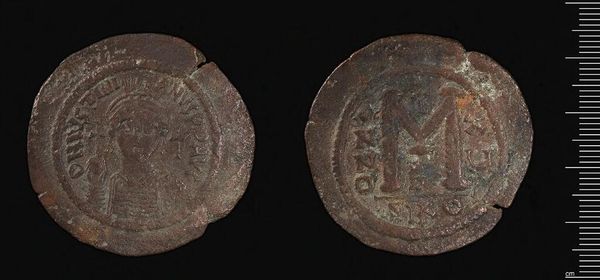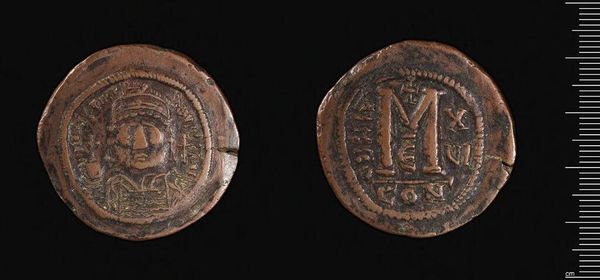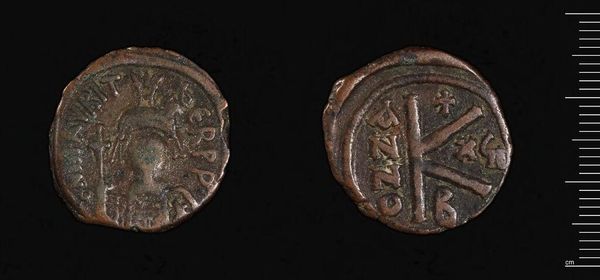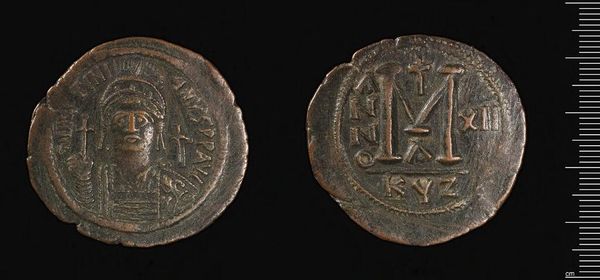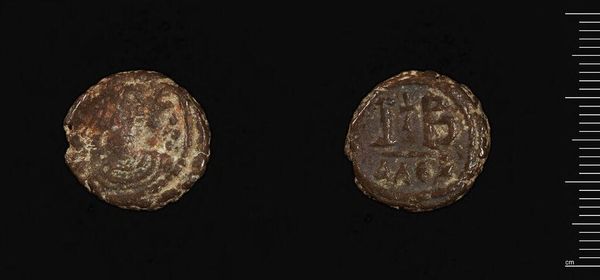
Coin of Maurice Tiberius c. 588 - 589
Dimensions: 4.96 g
Copyright: CC0 1.0
This is a coin of Maurice Tiberius, made of bronze in around the 6th century. The coin’s round form comes from the metalworking process used to make it, a technique known as striking. Molten metal was poured between two dies and then hammered to create the coin, imprinting it with symbolic imagery. The images on this coin, including a depiction of Emperor Maurice Tiberius and the Chi-Rho symbol, a Christian symbol formed by superimposing the first two letters of the Greek word for "Christ," convey status and authority. The worn surface, though obscuring the detail, speaks to the coin’s original use as currency and circulation through society. The use of bronze is itself significant: not as precious as gold or silver, but still valuable and durable. Bronze was suitable for a range of everyday transactions, making these coins both objects of power and practical tools of exchange. Considering this coin, one sees that the material and making processes are central to understanding its social and economic role in Byzantine society.
Comments
No comments
Be the first to comment and join the conversation on the ultimate creative platform.
